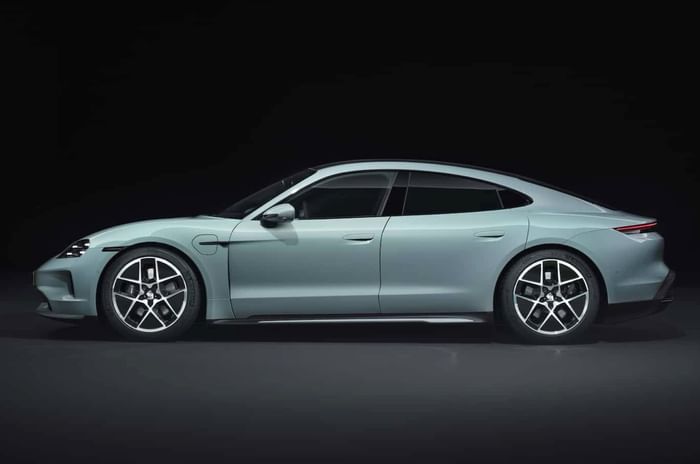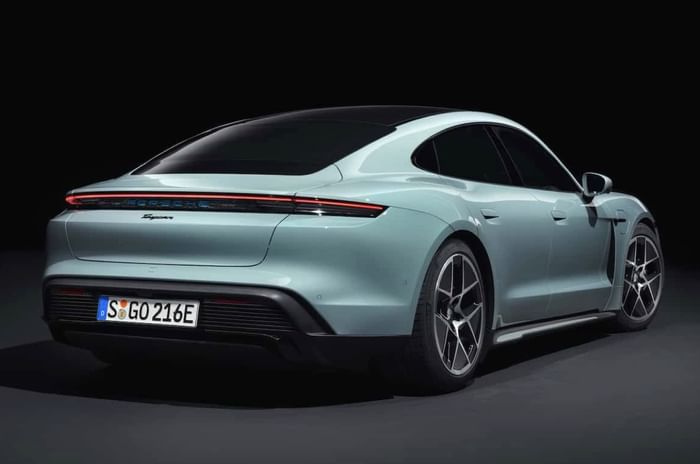Porsche has facelifted the Taycan for the first time since it went into production in 2019, but unlike most facelifts where updates are largely cosmetic, in true Porsche fashion, the Taycan gets a ton of electrical upgrades – it's more powerful, gets better electric hardware, is more efficient, and naturally, has better performance as well.
- Taycan Turbo S now most powerful Porsche with 952hp
- Accelerates from 0-100kph in just 2.4 seconds
- Gets subtle design tweaks and updated tech on the inside
Porsche Taycan powertrain, specs
Porsche hasn’t revealed the detailed specs of all the variants, but says every single model in the line-up is now more powerful, and faster. The most significant updates are to the rear axle motor, which now produces up to 109hp more than before, depending on the model. All motors are lighter, and get revised internals for better efficiency and more power.
In its top-rung Turbo S guise, the Taycan now produces 952hp when using launch control – up from 761hp of the outgoing model. This now makes the Taycan the most powerful Porsche ever, taking over from the 887hp 918 Spyder hypercar. 0-100kph sprint time has also resultingly come down from 2.8 seconds to just 2.4 seconds, again making it the fastest accelerating Porsche ever.

However, it’s the base rear-wheel drive model that sees the biggest jump in off-the-line performance, accelerating from 0-100kph in 4.5 seconds – up 0.6 seconds from the outgoing version. The base now produces 483hp, up from 326hp of the outgoing model. Additionally, variants equipped with the Sport Chrono package get a ‘push to pass’ button that offers a temporary boost of 95hp for a maximum of 10 seconds at a time.
Porsche Taycan battery, range and underpinnings
Sheer performance aside, Porsche has also improved the battery and range, especially since the range has never been a strong suit of the outgoing Taycan. There’s a new battery with revised cell chemistry, gross capacity for the larger Performance Battery Plus has gone up from 93.4kWh to 105kWh, and the 800V architecture will now be able to recuperate energy at up to 320kW, up by 50. Meanwhile, base models get their battery upgraded to 89kWh, up from 79.2kWh.

Porsche has also expanded the fast-charging window – 10 to 80 percent charge now takes as little as 18 minutes, down from 37 minutes – as well as energy regeneration capabilities under braking – it can now recuperate energy at speeds as high as 400kW, up 30 percent from before. Porsche, however, hasn’t revealed the official WLTP range figures of all models yet, but says it is now up to a maximum of 678km, an increase of 175 km or 35 per cent.
On the chassis front, all variants of the Taycan now get adaptive air suspension as standard, whereas all-wheel drive models get optional Porsche Active Ride suspension.
Porsche Taycan exterior, interior and features
Visually, very little has changed. Up front, there are new LED headlamps that get HD-Matrix design with detailed optics, and a slightly redesigned bumper with revised air vents. Updates are similar at the rear with new tail lamps and bumper. There are new colours on offer too, all models get new aero-optimised wheels, and the tires have been designed to reduce rolling resistance.

On the inside, there are software updates for the digital driver’s display and infotainment unit, and Porsche has also introduced two new leather-free interior upholstery options.
Porsche already sold all versions of the outgoing Taycan in India, so the facelifted model should make its way to India soon.









































